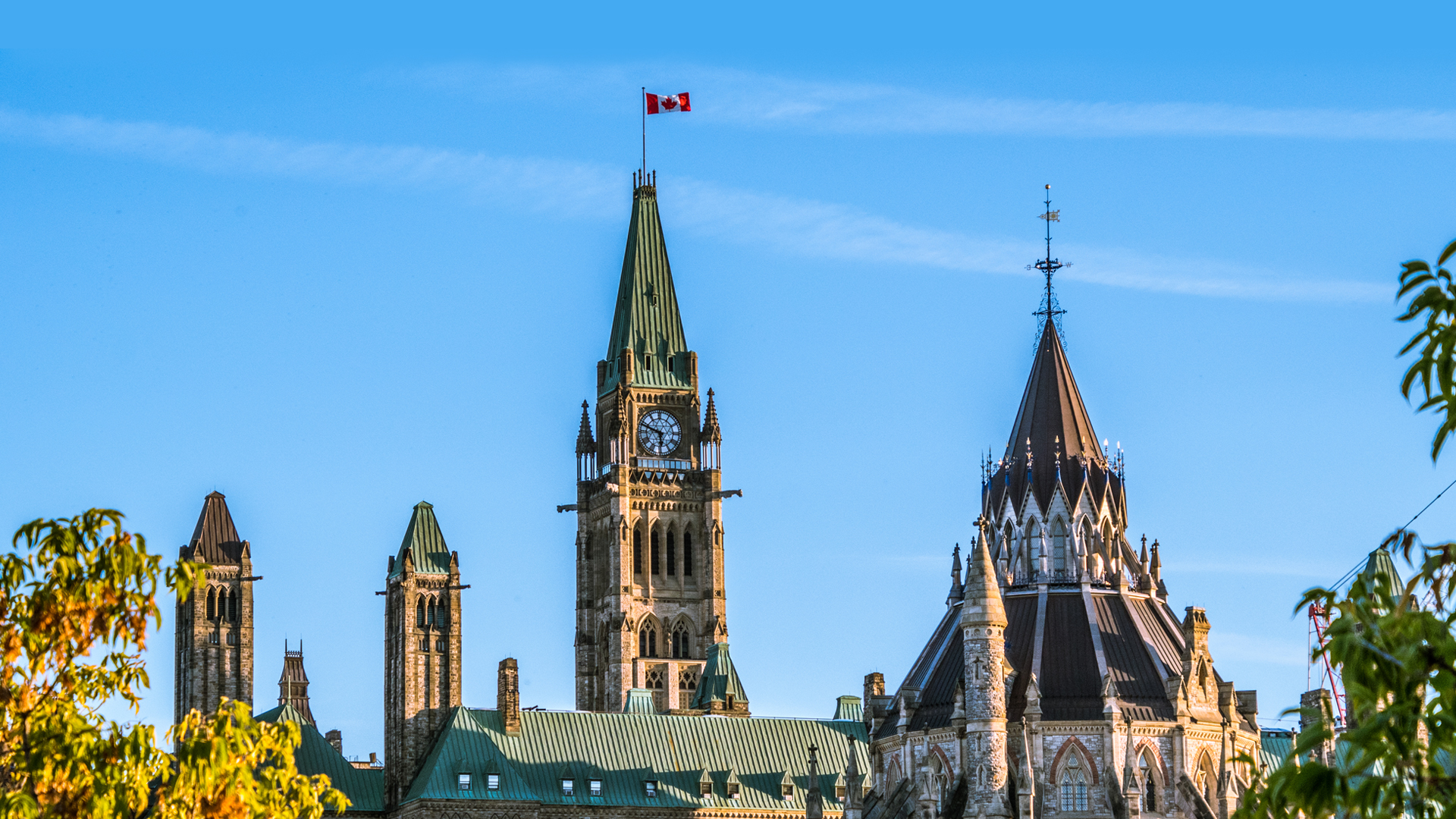The 2019 Federal Budget (Budget 2019), released on March 19, 2019 (Budget Day), was expected to provide a slew of goodies in advance of this year’s election, and did not disappoint. While the business and international tax measures addressed some so-called loopholes, the focus was clearly on providing targeted incentives to individuals, most notably with the expanded Home Buyers’ Plan and the new Canada Training Credit.
Budget 2019 did not include any personal or corporate tax rate changes but it did include several measures affecting corporate and personal taxpayers. Among other notable changes, Budget 2019 announces a $200,000 annual cap on employee stock option grants that may receive capital gains-like treatment, noting that this is more in line with the tax treatment in the United States. While Budget 2019 indicates that the cap will apply to employees of “large, long-established, mature firms” and employee stock option benefits would remain uncapped for “start-ups and rapidly growing Canadian businesses,” Budget 2019 did not include any specific details on this measure or contain draft legislative proposals. Budget 2019 provides that any changes to the stock option rules would apply on a go-forward basis only and would not apply to employee stock options granted prior to the announcement of legislative proposals to implement any new regime. Budget 2019 further noted that the Department of Finance plans to release further details before the summer of 2019.
A. Business tax measures
Scientific Research and Experimental Development
The scientific research and experimental development rules in the Income Tax Act (the Act) provide an enhanced refundable investment tax credit (ITC) to Canadian-controlled private corporations (CCPCs) at a rate of 35% on qualifying expenditures up to $3 million. The expenditure limit is phased out based on the taxable income and taxable capital employed in Canada of the taxpayer (and members of the associated group). Budget 2019 proposes to repeal the use of taxable income as a factor in determining a CCPCs expenditure limit for purposes of the enhanced ITC. As a result, CCPCs with taxable capital of up to $10 million will benefit from unreduced access to the enhanced refundable ITC. CCPCs with taxable capital in excess of $10 million will be entitled to a reduced refundable credit, and the credit will be eliminated for CCPCs with taxable capital of $50 million or more.
This measure will apply to taxation years that end on or after Budget Day.
Character Conversion Transactions
In 2013, the Act was amended to introduce the “derivative forward agreement” (DFA) rules, to close a perceived loophole whereby investment income was converted into a capital gain (included in income at a rate of 50%) through the use of derivative contracts. A DFA is, generally, a forward agreement to buy or sell property on a future date, where the amount payable under the agreement is linked to something other than that property’s fair market value, other than certain permitted variables. Under paragraph 12(1)(z.7) the amount of the gain realized on a DFA is included in income, as ordinary income rather than being taxed as a capital gain under subsection 39(1).
One of the permitted variables is the economic performance of the particular property being purchased or sold (the “commercial transaction exception”). The commercial transaction exception is intended to exclude certain transactions – such as ordinary mergers and acquisitions – from the scope of the DFA rules.
The Budget 2019 materials identified a form of character conversion transaction that the 2019 Budget materials indicate is designed to avoid the application of the DFA rules in reliance on the commercial transaction exception:
- A first mutual fund (Investor Fund) enters into a forward purchase agreement with a counterparty pursuant to which it agrees to acquire units of a second mutual fund (Reference Fund) at a specified future date, for a purchase price equal to the value of such units at the date the forward purchase agreement is entered into. Reference Fund holds a portfolio of investments that produces fully taxable ordinary income.
- On settlement of the forward purchase agreement, Investor Fund acquires the units of Reference Fund and treats the cost of those units as being equal to the purchase price under the forward purchase agreement.
- Investor Fund then immediately redeems or sells the units of Reference Fund and realizes a gain, which Investor Fund treats as a capital gain, by virtue of making an election to treat its Canadian securities (such as the Reference Fund units) as capital property under subsection 39(4).
In this transaction, the agreement is excepted from the DFA rules under the commercial transaction exception because Investor Fund’s economic return is based on the economic performance of the acquired units of Reference Fund over the term of the agreement. Investor Fund would, on this analysis, achieve a return equivalent to owning the underlying investments (which would have been fully included in Investor Fund’s income), but which is taxed as a capital gain.
To address this type of transaction, Budget 2019 proposes to amend the DFA rules to provide, generally, that the commercial transaction exception is not available if it can be reasonably considered that one of the main purposes of the series of transactions, which includes an agreement to purchase a security in the future, is for a taxpayer to convert into a capital gain an amount paid on the security, by the issuer of the security, during the period that the security is subject to the agreement.
This measure will apply to transactions entered into on or after Budget Day. The measure will also apply after December 2019 to transactions that were entered into before Budget Day, including those that extended or renewed the terms of the agreement on or after Budget Day. This grandfathering is subject to growth limits to ensure that no new money flows into grandfathered transactions on or after Budget Day.
Support for Canadian Journalism
To provide support for Canadian journalism, certain journalism organizations will benefit from three proposed new measures. First, a “qualified Canadian journalism organization” (QCJO) will be able to register as a “qualified donee” for purposes of the charitable donation rules in section 149.1. Second, a QCJO will be entitled to a refundable labour tax credit. Finally, a personal tax credit of up to $500 will be permitted for certain digital subscriptions to a QCJO.
A QCJO means a corporation, partnership or trust that is formed and operates in Canada. A Canadian resident must be the chair of the board of directors of a corporation, and Canadian residents must comprise at least 75% of the directors. Similar rules will apply to partnerships and trusts to ensure a sufficient level of Canadian control. In addition, the organization: (i) must be primarily engaged in the production of original general interest news and current events content (and not be primarily focused on a particular topic such as industry-specific news, sports, recreation, arts, lifestyle or entertainment); (ii) must regularly employ two or more journalists in the production of its content who deal at arm’s length with the organization; (iii) must not be significantly engaged in the production of content to promote the interests of an organization or its members, the government or government agencies, or to promote goods or services; and (iv) must not be a Crown corporation, municipal corporation or government agency.
In order to qualify as “qualified donee” for the purposes of the charitable donation rules, a QCJO will be required to register with the CRA and will not be permitted to distribute its profits, to be controlled by a person or group of related persons or to receive gifts that represent more than 20% of its total revenues (including donations) from any one source.
The refundable labour tax credit will be equal to 25% of salaries and wages paid to eligible newsroom employees of a qualifying QCJO, subject to a cap on labour costs of $55,000 per eligible newsroom employee per year. To qualify for this credit, a QCJO must be an entity primarily engaged in the production of original written news content. In addition, if it is a corporation, it must be either (i) a public corporation not controlled by non-Canadian citizens and listed on a stock exchange in Canada or (ii) a private corporation which is at least 75% owned by Canadian citizens or by public corporations described above.
The measure including a QCJO as a qualified donee will apply as of January 1, 2020. The measure relating to the refundable labour tax credit will apply to salary or wages earned in respect of a period on or after January 1, 2019. The personal tax credit for digital subscriptions will be available for eligible amounts paid after 2019 and before 2025.
Business Investment in Zero-Emissions Vehicles
Budget 2019 provides a temporary enhanced first year capital cost allowance (CCA) rate of 100% in respect of zero-emission vehicles. Two new CCA classes will be created: Class 54 for zero-emission passenger vehicles that would otherwise be included in Class 10 or 10.1, and Class 55 for zero-emission vehicles that would otherwise be included in Class 16. In the case of Class 54, there will be a limit (which will be reviewed annually) of $55,000 (plus sales taxes) on the amount of CCA deductible in respect of each zero-emission passenger vehicle.
To be eligible for the enhanced CCA, the zero-emission vehicle must (i) be a “motor vehicle” as defined in the Act; (ii) otherwise be included in Class 10, 10.1 or 16; (iii) be fully electric, a plug-in hybrid with a battery capacity of at least 15 kWh or fully powered by hydrogen, and (iv) not have been used, or acquired for use, for any purpose before it is acquired by the taxpayer. Budget 2019 also announced a new purchase incentive for zero-emissions vehicles. The federal incentive is up to $5,000 for electric battery or hydrogen fuel cell vehicles under $45,000. Vehicles benefitting from this incentive will not be eligible for the enhanced CCA.
Budget 2019 proposes corollary rules related to the enhanced CCA rate for short taxation years and for calculating proceeds of disposition for a zero-emissions vehicle that is subject to the $55,000 cap, and also proposes to amend the Excise Tax Act (ETA) to ensure that the treatment of expenses under the GST/HST rules parallels the income tax treatment of these vehicles.
This measure will apply to eligible vehicles acquired on or after Budget Day and that become available for use before 2028, subject to a phase out for vehicles that become available for use after 2023.
B. International tax measures
Transfer Pricing
There are two changes proposed to the transfer pricing rules.
First, a specific ordering rule is proposed to be introduced in new subsection 247(1.1) to clarify that the transfer pricing adjustment under Part XVI.1 of the Act will be made before any other provision of the Act applies. This amendment removes any uncertainty regarding whether the transfer pricing rules or the other provisions of the Act should be applied first. This change may impact the calculation of penalties imposed under Part XVI.1. The current exceptions to the application of the transfer pricing rules applicable to situations in which a Canadian resident corporation has an amount owing from, or extends a guarantee in respect of an amount owing by, a controlled foreign affiliate will continue to apply.
This measure will apply to taxation years that begin on or after Budget Day.
Second, clause 152(4)(b)(iii)(A) of the Act is proposed to be amended such that the expanded definition of “transaction” in subsection 247(1) will now be used for purposes of the extended reassessment period relating to transactions between a taxpayer and a non-arm’s length non-resident.
This measure will apply to taxation years in respect of which the normal reassessment period ends on or after Budget Day.
Foreign Affiliate Dumping
The foreign affiliate dumping (FAD) rules are intended to preserve the Canadian tax base by limiting opportunities for a foreign-controlled corporation resident in Canada (CRIC) to invest in foreign subsidiaries of the CRIC in a manner that permits the foreign shareholder to extract surplus from Canada without Canadian withholding tax. The FAD rules currently apply only in respect of CRICs that are controlled by a non-resident corporation (or by a related group of non-resident corporations).
Budget 2019 proposes to extend the application of the FAD rules to CRICs that are controlled by a non-resident individual, a non-resident trust, or a group of non-resident persons that do not deal with each other at arm’s length (which group may be comprised of corporations, individuals and/or trusts). In addition to modifying the FAD rules to account for control of a CRIC by individuals, trusts and groups of non-arm’s length persons, Budget 2019 proposes to add a new deeming rule that will deem, for the purposes of the FAD rules, a trust to be a corporation having share capital for purposes of determining when two or more persons will be considered related, or whether any person will be controlled by any other person or group of persons.
This measure will apply to transactions or events that occur on or after Budget Day.
Cross-Border Share Lending Arrangements
The Act provides rules relating to securities lending arrangements (SLAs) in section 260. The general purpose of these rules is to put the lender in a securities lending arrangement in the same tax position as if the securities had not been lent. The Act currently contains rules that determine the character of any dividend compensation payment made by a Canadian resident to a non-resident under an SLA for purposes of the withholding tax rules in Part XIII of the Act. If the SLA is “fully collateralized,” the dividend compensation payment is treated as a dividend and is subject to dividend withholding tax. If not “fully collateralized” the payment is treated as interest, which in most cases is not subject to withholding tax if paid to an arm’s length person.
Due to concern that non-residents who are share lenders are entering into transactions that skirt the application of the SLA rules to avoid withholding tax (either on the basis that the transaction is not an SLA or, if an SLA, is not fully collateralized), Budget 2019 proposes that all dividend compensation payments made under an SLA to a non-resident in respect of a share of a Canadian corporation will always be treated as a dividend. Such payments will therefore always be subject to dividend withholding tax. This change will also apply to dividend compensation payments under a “specified securities lending arrangement.”
Further rules are provided in Budget 2019 that will ensure the appropriate withholding tax rates, including under applicable treaties, will apply to compensation payments under an SLA.
This measure will apply to dividend compensation payments that are made on or after Budget Day.
C. Personal tax measures
While the focus for personal income tax measures is likely the fairly straightforward enhancement to the first-time Home Buyers’ Plan and the introduction of the new Canada Training Credit, Budget 2019 also introduced some more technical measures addressing specific and narrow tax issues involving mutual fund trusts and tax-free savings accounts (TFSAs).
New rules to prevent misuse of rules relating to mutual fund trust unit redemption
Budget 2019 introduces a new anti-avoidance provision (in subsection 132(5.3)) to combat certain tax strategies employed by a mutual fund trust (MFT) under the allocation to redeemers rules.
To prevent double taxation of trust income, trusts are generally permitted to deduct taxable income and capital gains that are paid or made payable to and taxable in the hands of their beneficiaries. However, when an MFT disposes of capital property to fund the redemption of a unitholder, double taxation can arise, as the MFT is subject to tax on the accrued gain on its capital property, and the unitholder is subject to tax again on the disposition of the MFT units. The capital gains refund mechanism in the Act is intended to remedy this double taxation by granting the MFT a refund of the tax that it paid on capital gains attributable to redeeming unitholders.
However, the capital gains refund mechanism does not work perfectly to avoid double taxation. In response, certain MFTs have adopted the “allocation to redeeming unitholders” methodology, the purpose of which is to have capital gains realized by the MFT in order to fund a redemption taxed in the hands of the redeeming unitholder. The proceeds of disposition of the unitholder’s units are reduced by the amount allocated to them by the MFT so there is no double tax at the unitholder level.
Certain MFTs have used this methodology to allocate capital gains to redeeming unitholders in excess of the capital gains that otherwise would be realized. This results in no change in tax for the redeeming unitholders but allows the MFT a deduction in respect of the full allocated amount, including the excess portion. No tax is paid on the excess portion until a later redemption of units by the remaining MFT unitholders. Budget 2019 calls this deferral “inappropriate.” New subsection 132(5.3) will now deny the deduction claimed by an MFT for this excess portion if the allocated amount is a capital gain and the unitholders’ redemption proceeds are reduced by the allocation.
Budget 2019 also takes aim at redemption transactions where an MFT uses the allocation to redeemers methodology to convert ordinary income into capital gains for the remaining unitholders. This can occur when redeeming unitholders hold their units on income account, but other unitholders hold their units on capital account. Calling this a “misuse of the allocation to redeemers methodology,” Budget 2019 introduces a new rule that will deny a deduction to the MFT in respect of a unitholder redemption if the allocated amount is ordinary income and the unitholder’s redemption proceeds are reduced by the allocation.
These measures will apply to taxation years of MFTs that begin on or after Budget Day.
Joint and several liability introduced for TFSA holders
Normally tax free, TFSAs may be subject to tax if it is found that the activities of the TFSA qualify as carrying on a business. Currently, the trustee of a TFSA is jointly and severally liable with the TFSA for any Part I tax owing, while the holder of the TFSA is not. This means that a TFSA trustee (generally a financial institution) might be left with a tax liability if there are insufficient assets in the TFSA to cover the tax.
Budget 2019 proposes to amend this, extending the joint and several liability of the trustee of a TFSA to include the TFSA holder.
This measure will apply to the 2019 and subsequent taxation years.
Expansion of the Home Buyers’ Plan
In a widely anticipated move, Budget 2019 has expanded the quantum of the Home Buyers’ Plan. Previously, first-time homebuyers were able to withdraw up to $25,000 from their RRSPs without penalty to fund the purchase of a house. This amount was then repayable into the RRSP over a number of years. The withdrawal limit has been increased to $35,000.
This measure will apply to the 2019 and subsequent calendar years with respect to withdrawals made after Budget Day.
Access to the Home Buyers’ Plan has also been expanded and it is now available to Canadians who have experienced marital breakdown and have lived apart from their spouse or common law partner for at least 90 days. This amendment applies for taxation years after 2019.
Additional Personal Income Tax Measures
Additional personal income tax amendments include, among others:
- The introduction of two new types of annuities that can be purchased under certain registered plans, including RRSPs, RRIFs, DPSPs, PRPPs and defined contribution RPPs. These measures will apply to the 2020 and subsequent taxation years.
- Less stringent requirements to qualify for enhanced tax credits when making donations of cultural property. This measure will apply in respect of donations made on or after Budget Day.
- The introduction of the new Canada Training Credit, a cumulative $250/year credit for working Canadians seeking to upgrade their skills with continuing education. This measure will apply to the 2019 and subsequent taxation years.
-
D. Excise duty and GST/HST measures
While Budget 2019 contains no significant amendments with respect to excise duties and GST/HST, Canadians involved in the medical or cannabis industry should pay attention to the introduction of new cannabis products subject to excise duty, the expansion of certain GST/HST exemptions for medical supplies, and the gradually expanding scope of the Medical Expense Tax Credit.
Continued development of cannabis taxation measures
A number of new tax measures to address cannabis were introduced in Budget 2019. The upcoming legalization and regulation of three new classes of cannabis products – edible cannabis, cannabis extracts and cannabis topicals – also warrants new tax legislation. Budget 2019 proposes to subject these three new classes to excise duties based on the quantity of total tetrahydrocannabinol (THC) contained in the final product. This THC-based duty will be imposed at the time of the packaging of the product, and become payable when it is delivered to a non-cannabis licensee. The combined federal-provincial-territorial THC-based duty for the new classes is proposed to be $0.01 per milligram of total THC.
These changes are proposed to come into force on May 1, 2019. The current excise duty regime for other classes of cannabis will not be changed.
Budget 2019 also provides helpful certainty with respect to the changing status of cannabis. The removal of cannabis from the Controlled Drugs and Substances Act brought access to the Medical Expense Tax Credit – previously available for certain cannabis products purchased for a patient for medical purposes – into question. The Act has now been amended to reflect this change in status, permitting users of medical cannabis to continue claiming this credit. This amendment is effective October 17, 2018.
GST/HST exemptions and zero-rating in the medical industry
Budget 2019 contained a number of proposals relating to GST/HST in the medical industry, including proposals:
- To add podiatrists and chiropodists to the list of practitioners on whose order supplies of foot care devices are zero-rated.
- To exempt the supply of multidisciplinary health services from GST/HST if the services are rendered by a team of professionals whose services are exempt from GST/HST when supplied separately. The exemption will apply provided that all or substantially all (considered to be 90% or more by the CRA) of the services is rendered by these exempt health professionals acting within the scope of their profession.
- To relieve the supplies and imports of human ova and imports of human in vitro embryos from GST/HST.
In addition, the tax treatment of fertility-related medical expenses is being reviewed for the purpose of the Medical Expense Tax Credit to ensure the credit reflects medically related developments.
These proposals are effective for supplies made after Budget Day.
E. Additional proposals and previously announced measures
Without introducing enacting legislation, Budget 2019 also proposes additional funding to tax audit teams, and promises future legislation that could have far-reaching effects.
More auditors; New audit teams
As with previous years, the government is expanding the number of auditors and audit teams. In Budget 2019, the government announced that more auditors will be hired into its high-net-worth individuals audit teams. Notably, the government announced an intention to spend $50 million over five years to introduce four new dedicated residential and commercial real estate audit teams in high-risk regions, including British Columbia and Ontario. Budget 2019 also announced additional funding for Statistics Canada to conduct a comprehensive federal data needs assessment to focus on enforcement efforts on tax compliance and anti-money laundering with respect to real estate purchases in Canada.
Limitation of employee stock options
Employee stock options are viewed as an alternative method of compensating employees. Where a stock option is granted to an employee of a public company and certain conditions set forth in the Act are satisfied (including that the exercise price is equal to the value of the shares at the time the option is granted), the employee is subject to income tax, at the time the option is exercised, on 50% of the difference between the fair market value of the stock at the time the option is exercised and the option price. These rules effectively provide “capital gains-like treatment” on the exercise of an employee stock option.
Budget 2019 indicates that the public policy rationale for preferential tax treatment of employee stock options is to support younger and growing Canadian businesses and that employee stock options should not be used as a tax-preferred treatment method of compensation for executives of large, mature companies.
To address this perceived inequality, Budget 2019 proposes to introduce new limits on the use of the current employee stock option tax regime, noting this is more in line with the tax treatment in the United States. While no legislation is provided, the highlights of the new policy are outlined in Budget 2019. A $200,000 annual cap on employee stock option grants that may receive tax-preferred treatment will be imposed on employees of larger, long-established firms. The cap is proposed to be based on the fair market value of the underlying shares at the time that the option is granted.
Budget 2019 proposes that no annual cap would be imposed on start-ups and growing Canadian businesses.
Budget 2019 states that the Department of Finance will release further details relating to these proposals before the summer of 2019 and any changes would apply on a go-forward basis and would not apply to employee stock options granted before the announcement of the legislative proposals.
Increased beneficial ownership transparency for tax authorities
Under the Canada Business Corporations Act, federally incorporated corporations are required to maintain beneficial ownership information. Further unspecified amendments are proposed to make this information more readily available to tax authorities and law enforcement.
Gradual implementation of the Base Erosion and Profit Shifting (BEPS) Project
While no particular provisions were announced in Budget 2019, the government has reaffirmed its commitment to the OECD’s BEPS Project. This includes the introduction of country-by-country reporting for large multinationals in 2018, with a review scheduled to be completed in 2020, and Canada’s ratification of the Multilateral Convention to Implement Tax Treaty Related Measures to Prevent Base Erosion and Profit Shifting (better known as the Multilateral Instrument or MLI).
Previously Announced Measures
Budget 2019 also confirmed the government’s intentions with respect to previously announced tax measures, including:
- faster tax depreciation of certain investments via the accelerated investment incentive and immediate write-off for certain manufacturing and clean energy equipment, as announced in the Fall Economic Statement;
- enhanced tax reporting requirements for certain trusts;
- tax support for electric vehicle charging stations and electrical energy storage equipment;
- regulatory proposals released on September 17, 2018, relating to the taxation of cannabis; and
- the extension of the 15% mineral exploration tax credit for an additional five years.













